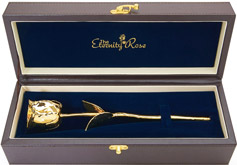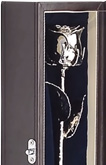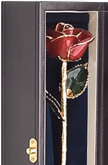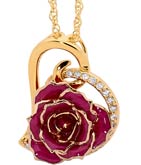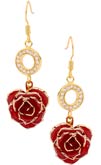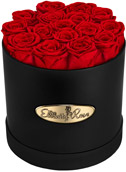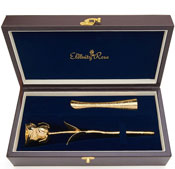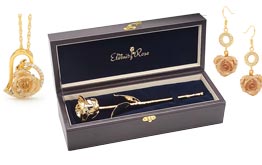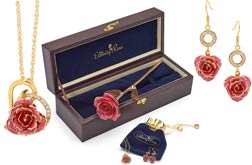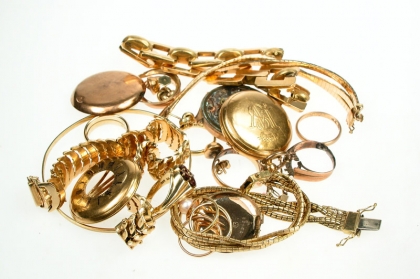What's in a Karat? Here's Why Karat Gold Matters to Your Valentine
Don't know much about gold? You should start by learning about karats. Find out more about karat gold and why it matters to your Valentine.
Did you know the use of gold in jewellery dates back as far as 5000 BCE by Egyptians? In fact, many ancient civilisations made use of it as well, such as Sumerians and Minoans.
Today, gold jewellery is still a much-wanted piece by many men and women around the globe. However, karat gold measurements may complicate buying nowadays, especially to those who don’t have that much knowledge about gold.
What makes their appearances and prices different, and what are the number markings on the jewellery? Keep reading to find out about karat, the purity of gold, and why the pure gold karats may not always be the best.
What is Karat?
Karat is a unit of purity, indicating how many parts of the jewellery are gold. It’s measured out of a maximum of 24, which means 24-karat jewellery is the purest. 18-karat gold jewellery then has 18 parts of pure gold out of 24 with the 6 parts made of other metals.
You’ll usually see the karats of gold jewellery indicated on the piece itself by a marking. It’s a number followed by one of the symbols indicating karat: k, K, kt or KT.
If there’s a P following the karat symbol, it means plumb. This indicates the minimum amount of gold in that jewellery. An 18KP mark would mean that it’s at least 18 karats pure.
However, not all jewellery pieces contain markings of purity indicated by karats. Some might use thousandths or percentages to show how many parts are gold.
A necklace stamped with 750 or .75 means it has 75% gold, which would mean it’s equal to 18K. Jewellery pieces with higher karats are more expensive due to having more gold.
If you want to know the purity of a piece in percentages using karats, divide the number by 24 and multiply by 100. If you have 14K jewellery, dividing 14 by 24 would yield you 0.583. Multiply that by 100 and you get 58.3, which means it’s 58.3% gold.
What are the Other Parts?
If a piece of jewellery isn’t pure gold, then what are the other parts and why are they important?
A piece of gold jewellery will usually contain nickel, copper, and zinc. In some cases, it may contain aluminium as well. The main reason why you’d need to mix gold with these other metals is for durability.
Gold is a soft metal. Even when used in a piece of jewellery, its pure form is too soft for it to become useful. This means that the less gold in a necklace, the harder and more durable it will be.
The downside to having less gold is that – the jewellery will have less value. Because the metals affect the colour of gold, it will also look less like gold.
It’s worth noting that gold gets beautiful different colours from mixing with the other metals, though. White gold, in particular, gets its hue from nickel and zinc. Pink gold can get its hue by using only copper, while green gold is possible using copper, silver, and zinc.
If you’re allergic to any of these metals, it’s better to go for higher-karat jewellery so that it contains less of these. You’ll have a lesser chance of getting allergic reactions, but you’ll have to take care of your gold better. It would be easy to scratch and damage even with irregular use.
Difference Between Karat Gold Values
The different karats of gold you’ll see in jewellery shops are 10K, 14K, 18K, 20K, and 22K. While 24K jewellery exists, it’s not common form as it’s too soft.
Note that without the “P” as in plumb, some countries allow a variation of +/- 0.5 karats. An 18K jewellery, in reality, might only have 17.5K gold or 18.5K.
24K Gold
An almost 100% gold jewellery is nice to have, but it isn’t always the best you can buy. It’s not practical to wear daily, so people instead save their expensive 24K jewellery for special occasions. If you were looking for something you can wear almost every hour, this isn’t the right piece to buy.
So if you want to spoil her with a pure 24K gold romantic gift that won’t get damaged through wear, you may consider an exquisite rose that has been preserved and dipped in 24K gold, along with a vase in a rose and vase set.
22K Gold
22K jewellery is a mix of 92% gold and 8% other metals, which makes it more durable than 24K. However, it’s still rather soft and easy to scratch and bend; you won’t still be able to wear it every day.
18K Gold
This contains 75% gold and 25% other metals, making it a popular choice for those wanting a gold piece. It’s high-quality gold jewellery that’s durable enough for regular use but still retains that beautiful gold colour.
14K Gold
With 58% gold and 42% other metals, this is the best choice for something you’d want to wear daily.
Most people prefer this for use in their wedding bands since it can also withstand active lifestyles. It’s also a popular gift for romantic moments like Valentine’s Day.
Note that the fineness mark of 585 is equal to 14K in Europe.
10K Gold
With 10K gold, you have a higher alloy metal to gold ratio, which is why some might prefer 14K and up. It won’t look as nice as jewellery with higher karats, but it’s loads cheaper than the rest. Those who’d want to have nice gold jewellery without much of a budget can opt for 10K gold instead.
Any jewellery with less than 10K, some countries don’t consider as gold. In fact, it’s illegal to sell mark something as gold when it contains less than 41.67% of the precious metal.
How Jewellery Shops Price Gold Jewellery
The purity isn’t the only factor that comes into play when it comes to pricing. Jewellery shops also factor in the gram weight, the design, and the craftsmanship. Pricing based on karats and gram weight won’t reflect the beautiful and intricate work put into the piece.
Buying Gold Jewellery for Your Loved Ones
Both a lower- and higher-karat gold jewellery will make any event feel more special. If you want only the perfect gift for Valentine's Day, your anniversary, or for any other occasion for your loved one, though, look no further than here.









